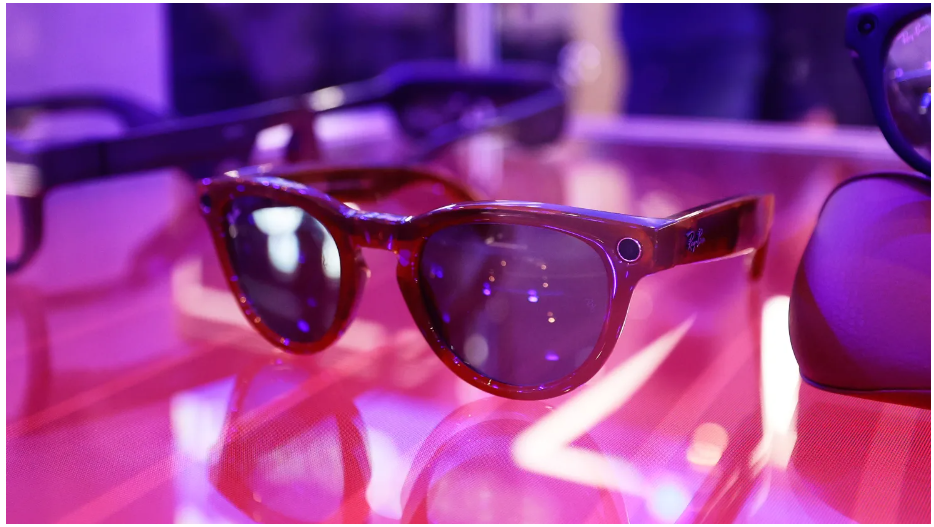-
Qualcomm CEO Cristiano Amon told CNBC the chip designer is working with Samsung and Google to explore a mixed-reality set of glasses.
-
Google, Samsung and Qualcomm’s smart glasses would be a different approach from Apple’s Vision Pro, a mixed-reality headset launched this year that is worn on a user’s head and can be controlled through hand gestures.
-
“But what I really expect to come out of this partnership, I want everyone that has a phone to go buy companion glasses to go along with it,” Amon said.
Qualcomm CEO Cristiano Amon told CNBC the chip designer is working with Samsung and Google to explore a mixed-reality set of glasses linked to a smartphone — taking a different approach from Apple, which launched a larger headset.
Last year, Google, Samsung and Qualcomm struck a partnership to develop mixed-reality technology. That refers to the combination of augmented and virtual reality, often involving digital images that are imposed over the real world in front of you.
Amon’s comments are among the first to shed light on the project.
“It’s going to be a new product, it’s going to be new experiences,” Amon said, discussing what will come out the mixed reality partnership.
“But what I really expect to come out of this partnership, I want everyone that has a phone to go buy companion glasses to go along with it,” Amon added.
Samsung and Google were not immediately available for comment when contacted by CNBC.
The CEO referenced Facebook-parent Meta’s Ray-Ban smart glasses, which look like regular shades but are wirelessly linked to a smartphone and have an in-built camera. On top of that, they have a voice assistant powered by Meta’s Llama artificial intelligence model.
Qualcomm has also made mixed reality a key target area, as it diversifies its business beyond smartphones. The company has a chip called the Snapdragon AR1 Gen 1, designed for smart glasses.
Qualcomm has been touting the fact that its various chips across smartphones and PCs allow AI applications to run on the device, rather than being processed in the cloud via the internet.
“AI is going to run on the device. It’s going to run on the cloud. It’s going to run some in the glass, some in the phone, but at the end of the day, there’s going to be whole new experiences,” Amon said.
Smaller market
Virtual and augmented reality headsets are still a smaller market than smartphones. The International Data Corporation expects 9.7 million VR and AR headsets to be shipped this year — sharply lower than the forecast of 1.23 billion smartphones.
Common complaints with AR and VR devices, which have so far typically been large headsets, are that they are not convenient and are also at times uncomfortable to wear. A set of smart glasses could solve this, bringing a stylish device to the mixed-reality market.

Ray-Ban Meta smart glasses are powered by a Qualcomm chip. Qualcomm, Samsung and Google are working on smart glasses, according to Qualcomm CEO Cristiano Amon.
Nurphoto | Nurphoto | Getty Images
“I think we need to get to the point that the glasses are going to be no different than wearing a regular glasses or sunglasses. And then with that, we can get scale,” Amon said.
Google, Samsung and Qualcomm’s smart glasses would be a different approach from Apple’s Vision Pro, a mixed-reality headset launched this year that is worn on a user’s head and can be controlled through hand gestures.
Details about the project involving the three players are still sparse. In an interview with CNBC this year, TM Roh, the head of Samsung’s mobile division, said that the company would announce a new “mixed-reality platform” within the year. This is likely to be a software product, according to Roh, though he declined to elaborate at the time.
TrendForce 2024 Near-Eye Display Market Trend and Technology Analysis
Release Date:2024 / 07 / 31
Languages:Traditional Chinese / English
Format:PDF
Page:164
|
If you would like to know more details , please contact:
|












